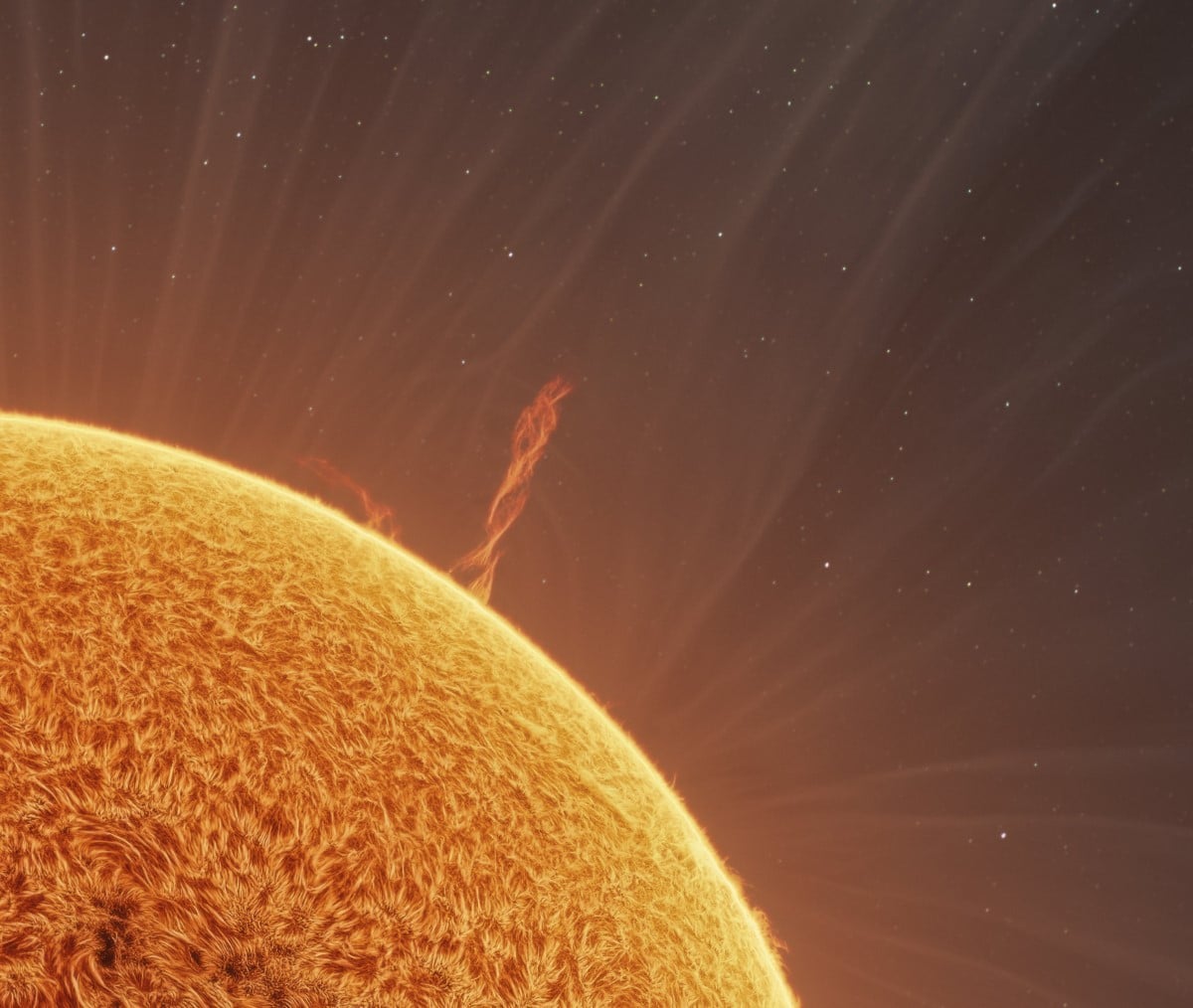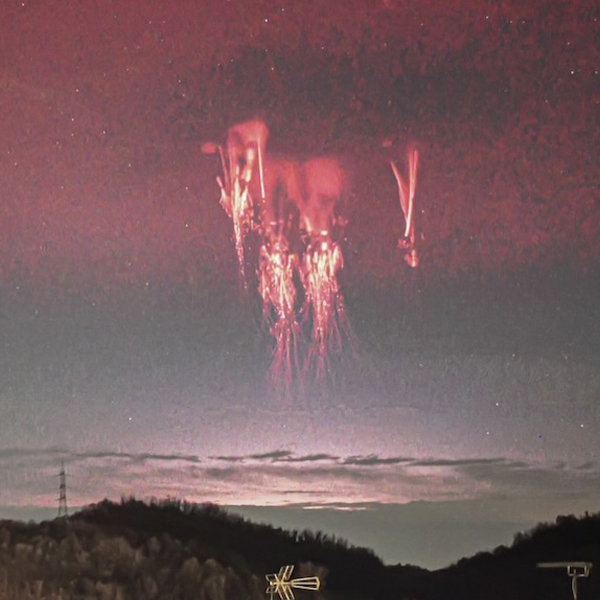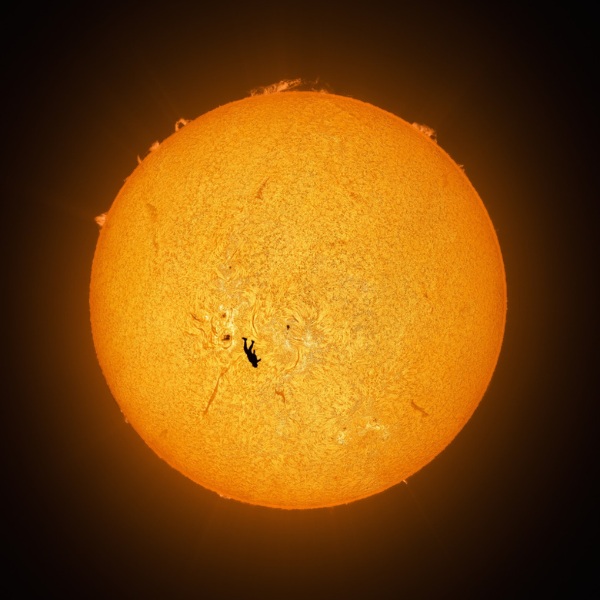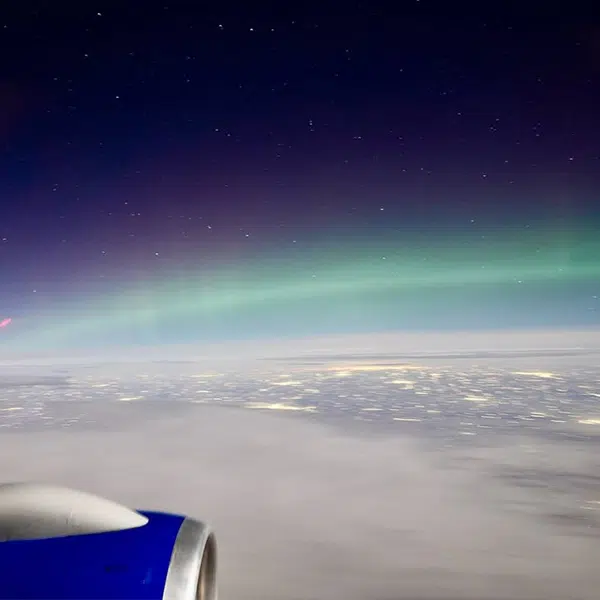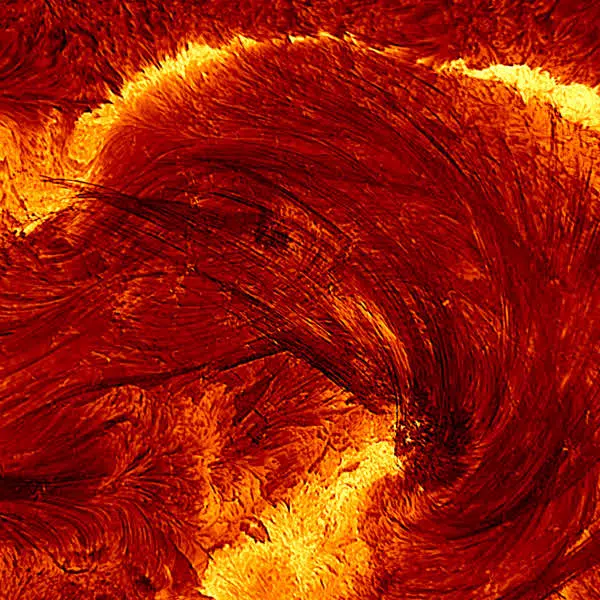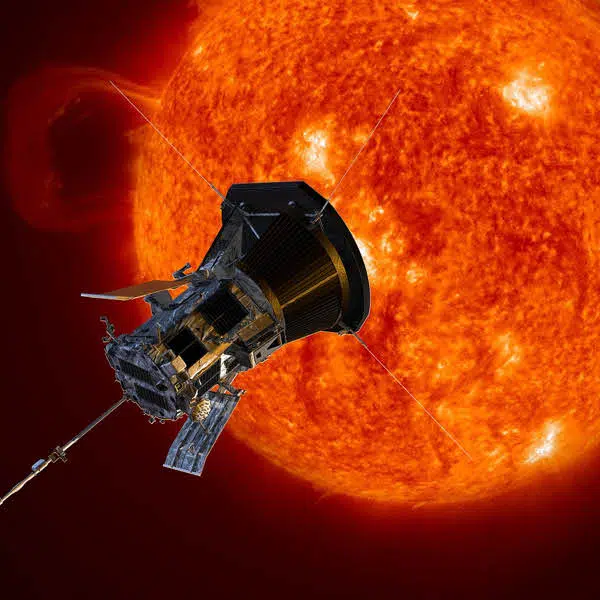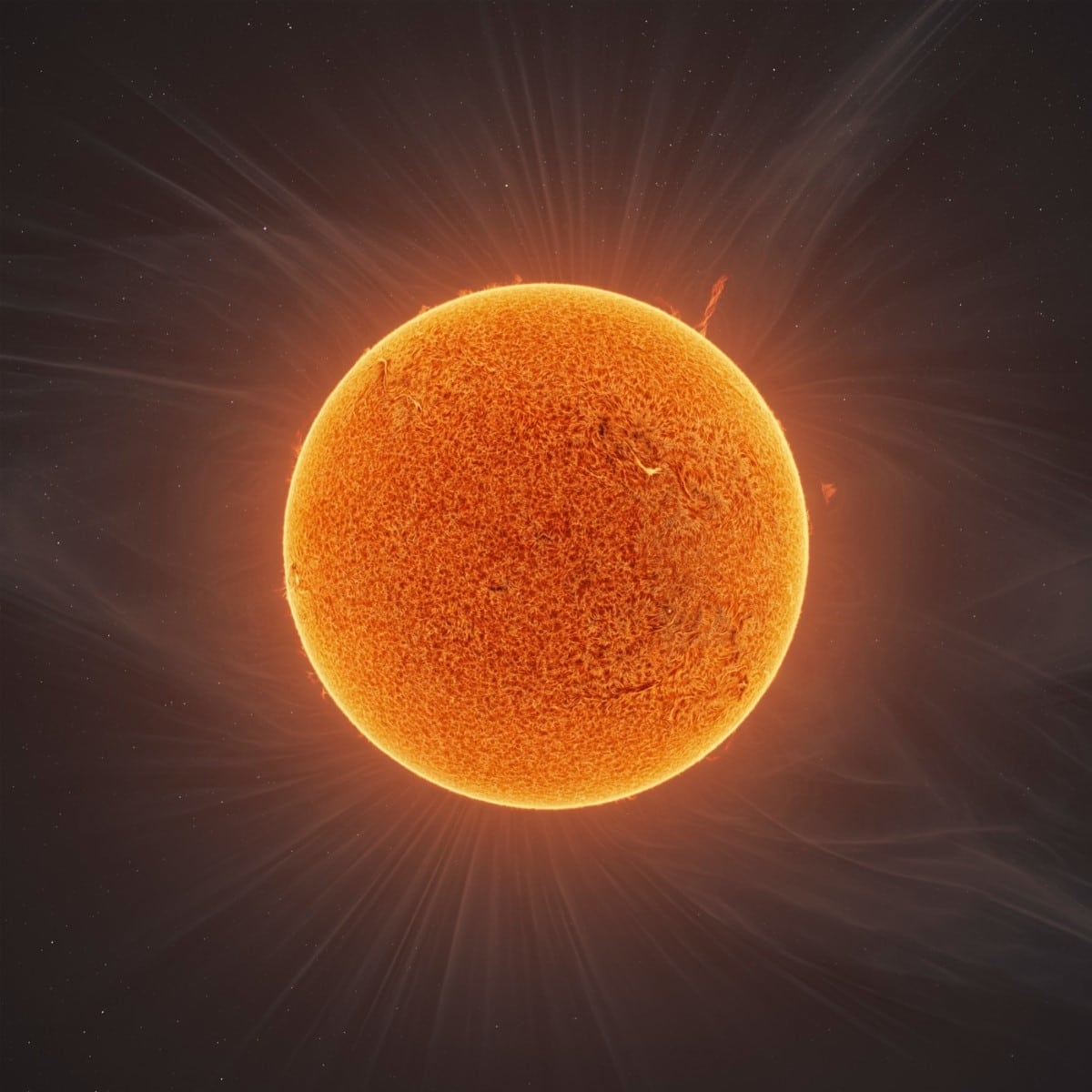
Two astrophotographers teamed up to produce an incredible 140-megapixel image of the Sun. Andrew McCarthy and Jason Guenzel are each skilled in the art of capturing the cosmos, but what they have been able to produce together is mindblowing. This image of the Sun shows its fiery surface in rich detail, as well as a plasma “tornado” that is the height of 14 Earths (which is approximately 111,000 miles).
McCarthy and Guenzel have admired each other's work for some time and have been looking for an opportunity to collaborate. When the weather conditions lined up, they were able to take advantage of their individual skill sets to produce something magical. “He specializes in extracting incredible detail from the raw data, while my strength is building large mosaic images of the Sun,” McCarthy tells My Modern Met. “By combining our strengths, we were able to create an incredible piece of work that pushes the boundaries of what's possible with amateur equipment.”
To produce the final image, McCarthy took around 200,000 shots of the Sun. He and Guenzel then worked together for five days to process the data and composite the photo. The photo, which is titled Fusion of Helios, uses 90,000 of McCarthy's images, as well as a 2017 eclipse photo taken by Guenzel. This image was used to incorporate structures that would otherwise be invisible. These creative choices require precision and knowledge in order to offer a pleasing result, and it's clear that McCarthy and Guenzel went above and beyond to bring an exceptional piece to the public.
“Capturing the Sun requires a bit of artistry due to the very nature of it,” explains McCarthy. “The extreme range of tones present in the varying layers of the solar atmosphere means any type of traditional photography won't be able to reveal them all. For that reason, some creative interpretation is required.
“In this case, the addition of the solar corona and background stars, which would ordinarily be invisible outside of during a solar eclipse, were added. While the addition was an artistic choice, great care was taken to transform Jason's 2017 eclipse shot to properly align with the solar activity that day, and an image from SOHO, a space-based solar observatory, was used as a reference.”
The astrophotographers hope that this collaboration will encourage others to learn more about our universe and what's happening in the cosmos—just without looking directly at the Sun. In fact, if you are curious how astrophotographers are able to safely capture these types of photos, learn more in this comprehensive guide by McCarthy.
If you are interested in seeing a larger version of Fusion of Helios, check out McCarthy's Twitter. McCarthy and Guenzel are also selling a variety of digital downloads and prints on their respective websites.
Two astrophotographers teamed up to create a highly detailed, 140-megapixel photo of the Sun.
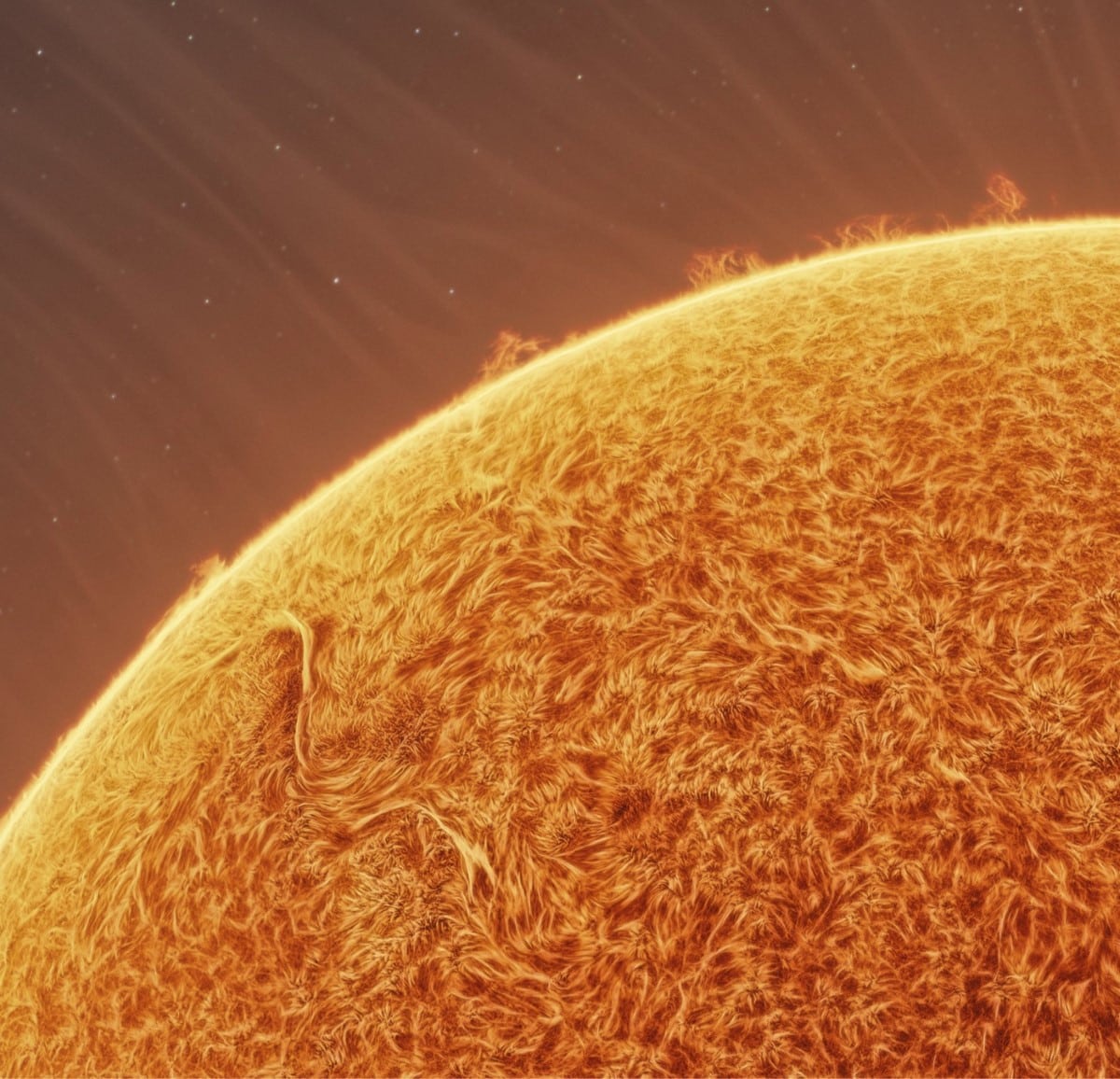
The photo even shows a massive plasma “tornado” that is as tall as 14 Earths.
